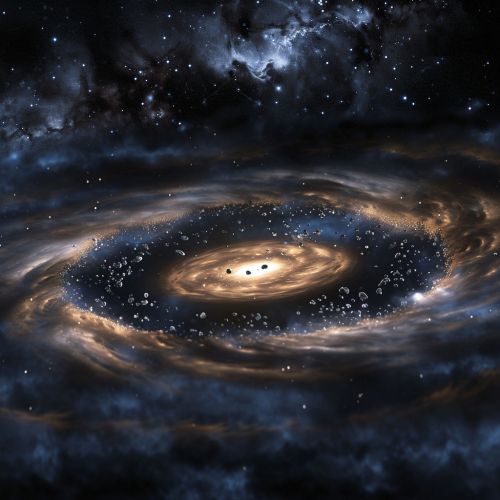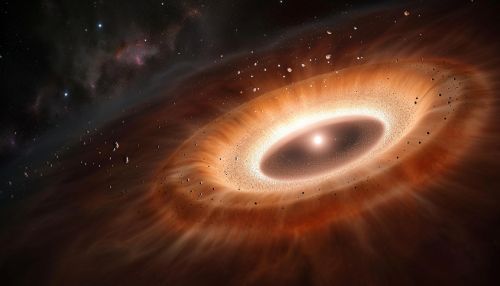Planetesimal
Formation
Planetesimals are formed through a process known as accretion, where dust and gas in a protoplanetary disk begin to clump together. Initially, these clumps are microscopic, but over time, they grow in size through collisions and gravitational attraction. This process is thought to take several thousand years, with planetesimals eventually reaching sizes of up to several kilometers in diameter.


The formation of planetesimals is a critical step in the formation of planets. Without planetesimals, there would be no building blocks for planets to form from. The process of planetesimal formation is still not fully understood, with many questions remaining about the exact mechanisms involved.
Composition
The composition of planetesimals can vary greatly, depending on the region of the protoplanetary disk they formed in. Planetesimals that form closer to the central star are typically composed of heavier elements, such as iron and nickel, while those that form further out are composed of lighter elements, such as hydrogen and helium, as well as ices.
The composition of a planetesimal can have a significant impact on its evolution. For example, planetesimals composed of heavier elements are more likely to retain their original form, while those composed of lighter elements and ices are more likely to undergo significant changes due to processes such as sublimation and outgassing.
Evolution
Once a planetesimal has formed, it can undergo a variety of evolutionary processes. These can include further growth through accretion, collision and merging with other planetesimals, or disruption and fragmentation due to high-speed impacts.
In some cases, a planetesimal may grow large enough to become a protoplanet, a body that is on its way to becoming a fully-fledged planet. In other cases, a planetesimal may be ejected from its protoplanetary disk and become a Rogue planet, wandering through space without a star to orbit.
Role in Planet Formation
Planetesimals play a crucial role in the formation of planets. They act as the building blocks for planets, with larger bodies accreting planetesimals through gravitational attraction. This process can lead to the formation of protoplanets, which can then go on to become planets through further accretion and growth.
In addition to their role in planet formation, planetesimals can also contribute to the formation of other celestial bodies, such as moons and asteroids. For example, it is thought that many of the moons in our solar system formed from planetesimals that were captured by the gravitational pull of the planets they now orbit.
Impact on Life
Planetesimals can also have a significant impact on the development of life. For example, it is thought that planetesimals may have delivered water and other essential elements to Earth, contributing to the development of life on our planet.
In addition, the impact of planetesimals can also have a significant effect on the climate and environment of a planet. For example, the impact of a large planetesimal could cause significant changes in a planet's atmosphere, potentially leading to mass extinctions or the creation of new habitats.
